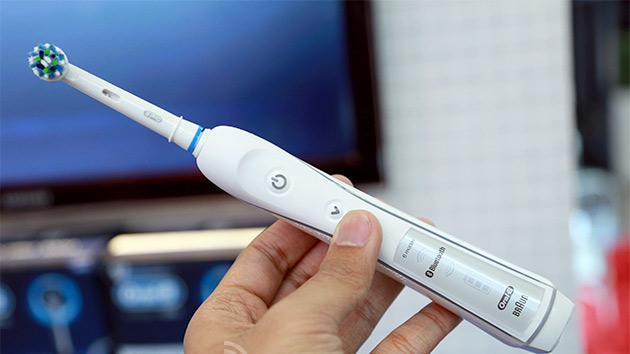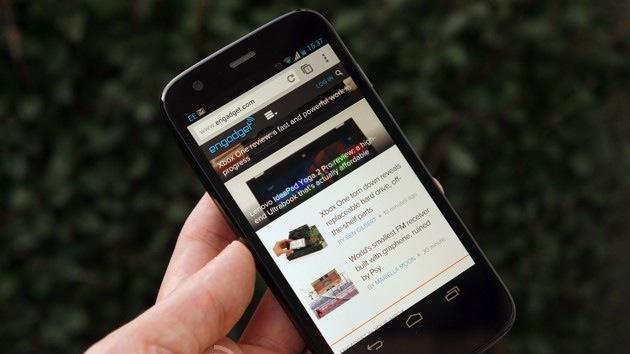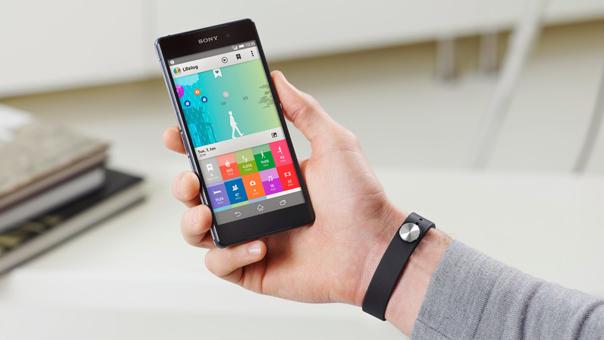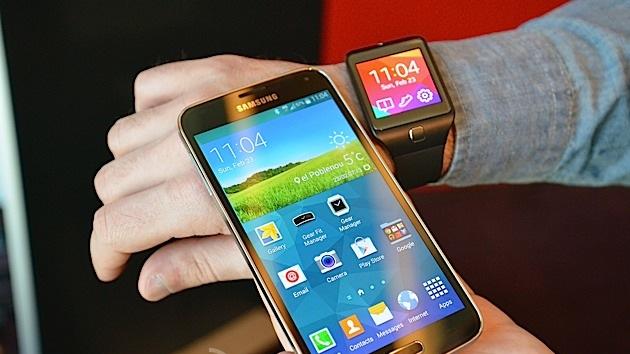mwc2014
Latest

Motorola: We're working on a smartwatch too
Well, well, well. Guess who's back in the watch game? Motorola. Of course, it already did the watch thing, but Rick Osterloh, SVP of Product at the firm, has just confirmed that the company is working on another smartwatch, and it will be coming in the next few months. At a press conference at MWC, Osterloh commented that the problem with current watches is that no one wants to wear them (hear that Samsung?), and it's a problem the company is tackling head on. It also might not just be another straight-up sports watch this time, with Osterloh asserting "it'll solve some real user problems." Good looks and brains? Surely not.

Motorola confirms Moto Maker service coming to Europe in Q2, starting in the UK and Germany (update: Mexico too)
We've seen and heard plenty from most of the main players here at MWC, but one company has remained eerily quiet until now. Motorola's situation has changed significantly in recent weeks, and that change of plans has taken attention away from hardware releases, and back onto how it plans to reinvent itself post-Google. But, there is news. Rick Osterloh, SVP Product Management has just announced that its popular Moto Maker service will be coming to Europe in Q2. First in the UK and Germany, but more countries to follow. Mark Randall, SVP Supply Chain & Operations also revealed that while its Texas plant will continue to handle the US side, they are exploring options for Europe. This could involve a mix of local sourcing, or order merging with standard orders from China. At the very least, if you weren't happy with the default color options it launched with, there's hope for you yet! Update: Moto Maker support is also heading to Mexico, also in Q2!

Oral-B's smart toothbrush wants to fix our dumb hygiene habits (hands-on)
Were we expecting to find a Bluetooth-enabled toothbrush here at MWC? No, we weren't. Did we physically put it to the test, after a long line of other exhibition goers? No, we certainly did not. However, we'd be more than pleased to show you how the Oral-B's SmartSeries 7000 might earn its keep. As you're about to see, the $220 gizmo can do plenty of things that normal toothbrushes can't.

Huawei's flagship phablet is only $300 in China, and its CMO explains why
Huawei's recently announced MediaPad X1 has caused quite a stir -- it's the lightest and smallest-ever 7-inch tablet (let alone a phablet), while also packing decent features like a 1,920 x 1,200 display, 5,000mAh battery and 150 Mbps LTE. The retail price quoted at the launch event was €399 or about $550 for the LTE model, but back in China, it appears that Huawei's slapped an insane discount on the same quad-core tablet, albeit under a slightly different name. Dubbed the Honor X1, the 3G model will retail for just CN¥1,799 or about $290, and the 4G version will go for just CN¥1,999 or $330. That's a $220 drop for the LTE model! So when we caught up with Huawei Device's CMO Shao Yang at MWC, we had to ask him: What was he thinking? Well, it's all about the way consumers perceive this device in different regions.

Panasonic's latest Toughpad has the strength, thickness of 10 smartphones (hands-on)
Panasonic may have bowed out of the consumer smartphone game, but gadgets for businesses are a completely different story. That's why the Japanese company came to Mobile World Congress with a new pair of rugged Toughpad smartphones in tow. You can't mistake them, despite their identical looks, because one runs Android 4.2.2 and the other has Windows Embedded 8 Handheld -- and we just got a chance to see what they're made of.

Lumus and eyeSight deal brings gesture control to DK-40 smart glasses hand-on
Imagine a pair of Smart Glasses that you didn't need to fondle just to dismiss notifications, or worse, speak out loud to like a crazy. It's that exact thought that brought Lumus and eyeSight together. If you know each company's respective products, you don't have to imagine too hard what's going on, but if you don't? Basically Lumus makes a Google Glass-like product that has a see-through display in one lens that shows notifications, calendar entries and so on. EyeSight makes software that allows gesture control through existing cameras (like that one in your laptop or phone), and has, for example, just penned a deal with Oppo that sees the software baked into its phones' native controls (wave to browse the gallery, etc.). The collaboration between Lumus and eyeSight was announced here at MWC, and we just swung by to take a look. The Lumus glasses we saw back at CES are unchanged, but this time around, you can dismiss email and social media notifications (for example) with a simple flick, or pull out reminders and calendar entries from the side with a swipe. We were mighty impressed with how well it worked, and how fluid and responsive the interaction was. Of course, this is only a simple demonstration of what is possible, but it's not hard to imagine more creative applications for it further down the line (games, media control, etc.). Of course, some might argue that waving around in the empty space in front of you is no less conspicuous than talking to yourself, but once you've tried it for yourself, we think you'll agree it's a much easier way to interact with a HUD than an out-of-sight touchpad or unreliable voice command. Lumus still hasn't confirmed commercial plans for its glasses, so it could be a while before you decide for yourself. Steve Dent contributed to this report.

Blackphone aims to protect your privacy in a world where your data is for sale
Information is a currency. For every company selling your details for profit, there's another selling you the promise of more security. Recognizing that consumers are running a gauntlet every time they pick up their smartphone, a group of companies has partnered up to offer something different. Announced earlier this year, the Blackphone is an Android smartphone that prioritizes privacy and security, shielding your data from carriers, advertisers and malicious third parties who could trade your details for the purposes of profit or oppression -- and it's on sale today for $629. How does it work? The idea is pretty simple: You start out with a nicely designed and well-specced Android-based phone, and then package it with some tried-and-tested apps and services that will work out of the box. The first layer is a customized skin called "PrivatOS" which gives the phone a different look and feel, but also works as a platform (soon to be open-source) that encrypts locally stored information. Next, you add in services like Silent Circle and Disconnect.me to enable anonymous phone calls, texts and browsing too. Finally, Blackphone comes with utilities that give the user better control over what third-party software does on their phone. We tried out a dashboard that makes it extremely easy to set the degree of access each app has to cellular networks, WiFi and locally stored info. The video below shows you just how easy Blackphone makes it to take yourself off the grid.

We get touchy-feely with Fujitsu's haptic sensory tablet (video)
Since Fujitsu's prototype Haptic Sensor Tablet revealed yesterday is all about touch, describing it will be like trying to explain how a steak tastes. But here goes: It works by emitting ultrasonic vibrations below the touchscreen, which can be pulsed with varying force on any region of the screen. Those oscillations actually push your finger off the surface of the tablet and, depending on the strength, can give different tactile sensations. For instance, a high-pressure layer of air can reduce friction, making the surface of the screen seem slippery. By contrast, rapidly varying the pulses can make the display seem rough or even bumpy. At least, that's the theory. After trying it, we found some illusions like the slippery surface to be very convincing. Different textures could also exist on different regions of the screen at a resolution of several pixels. That made other simulations, like the clicking of a combination lock or DJ app volume control uncannily accurate. But the rough-texture test felt more like the screen was just sticky, and the bumpy experience was even less convincing. When touching the crocodile skin, for instance, it just felt like I was moving my finger over slippery and then clingy patches. When using it, there's also an unnatural, mildly disconcerting buzzing sensation. All said, though, it was still a lot of fun, and it's hard to see how you could get much more realistic than that with a smooth, 2D surface (as opposed to the popup overlay on the Tactus display, for instance). There's a video after the fold showing it in action, but we apologize for the occasionally poor sound quality -- as you'll see, each time the haptics activated, it messed up our camera's microphone.

BlackBerry could turn BBM into a payments platform
BlackBerry's showing off its plans to woo back all of the customers who ditched it during the BB10 transition. In addition to two new handsets, the Canadian outfit is also considering turning BBM into a mobile payments platform in the emerging markets where it still has traction. In a chat with Re/code, enterprise chief John Sims said that BlackBerry is meeting with partners and "exploring the market." It wouldn't be the first time the company has waded into the mobile-money lake either, considering that it teamed up with an Indonesian bank to test BBM-based peer-to-peer fund transfers back in 2012. As long as it'll enable us to split the dinner bill without looking up from our phones, we're up for it.

China's Allwinner also has an octa-core chip, touts powerful graphics
Samsung, MediaTek, Huawei and even Qualcomm are now in the octa-core SoC game, but there's always space for more. The latest member is China's Allwinner Technology, who's best known for making the chipsets inside many low-end devices. Like most of its competitors, Allwinner's UltraOcta A80 silicon (pictured above on a development board) uses ARM's big.LITTLE heterogeneous multi-processing design, meaning it can simultaneously run on all eight cores -- four low-power Cortex-A7 and four high-end Cortex-A15. The chip also features Imagination Technologies' 64-core PowerVR G6230 GPU, which promises to deliver "a twofold increase in graphics" performance when compared to Allwinner's previous flagship SoC, the A31 series. We'll spare you from all the nitty-gritty, but you can learn more in the source links below. Expect to see the UltraOcta A80 in affordable devices "in the next few months."

The i'm Tracer bracelet means never having to ask 'where's the kid?'
The kooky folks behind the (frankly awful) i'm Watch are a mainstay at Mobile World Congress. This year they've got something a little more useful to show off: It's called the i'm Tracer, and it's the evolution of another GPS tracker the company has highlighted before. The Tracer is a wearable mash-up of a GPS module and a GSM radio the Italian company hopes will help you keep tabs on your kids when it launches this summer.

BlackBerry currently has no plans for a wearable device
Wearable devices seem to be a hot trend in the wireless industry right now, but BlackBerry isn't taking the bait... at least, not yet. When asked about his company's plans at Mobile World Congress, CEO John Chen was very straightforward in confessing that he has no current plans for bringing a wearable device to market. That doesn't mean it won't happen down the road at some point, of course, but it's clear that this particular market segment isn't really an area of interest or focus right now -- considering the company is working hard to bring out fresh devices and is in the midst of getting back to becoming profitable, and it appears that BlackBerry doesn't believe that such a device would really make a dent in its bottom line yet.

BlackBerry announces the Classic with physical keyboard and trackpad, coming later this year
As part of BlackBerry's festivities at Mobile World Congress, CEO John Chen announced a pair of new devices. In addition to the Z3 (Jakarta), Chen also stated that a new QWERTY device called the Classic (aka Q20) is in the works, and will be coming out sometime later this year alongside an update to BES12. We don't know much about the device at this point, but Chen tells us that it'll feature the "tool belt," which means you can expect to see the traditional BlackBerry trackpad and function keys frequently seen on the company's older smartphones. We also know that the handset will come with a 3.5-inch touchscreen, a little bigger than the one we found on the Q10, but the Classic will retain the Q10's top-tier fretted keyboard. The company hasn't gone into specifics, but has also mentioned that we'll see the device come with a "large battery," for even longer life than the current generation of devices. The Classic/Q20 will launch in the second half of the year, just as soon as the team can, you know, decide upon a name.

BlackBerry Z3 'Jakarta' coming to Indonesia in April for under $200
BlackBerry CEO John Chen is here at MWC and has some device news. The executive announced progress on the Z3, the phone codenamed Jakarta (shown off above), which will be coming out to Indonesia in April. The company plans to sell the 5-inch device, which is a collaboration between BlackBerry and Foxconn, for under $200. The initial model will be 3G-only, but Chen also tells us that there will be an LTE version coming out to other parts of the world at some time in the future; joking, Chen mentioned that it would come out "sometime before I die." We're also told that BlackBerry plans to do some interesting new stuff with BBM. Update: We got a few up-close photos of the Z3, which you'll find below. The Z3, which runs BB 10.2.1, definitely has the trademark look and feel of a BlackBerry. It's a sleek all-touch device with a ridged soft-touch back cover. Unfortunately we weren't able to hold it, so we can't speak to how comfortable it is. We're also told that we'll be quite happy with the long battery life, but no solid specs were given. BlackBerry has put up more info about the Z3 on its blog. Additionally, Chen also officially confirmed that a device known as the Q20, aka the Classic, is in the works, and will be coming out alongside BES 12 sometime before the end of the year. The Q20 will be a QWERTY device that will feature the "tool belt," which means you'll see a classic trackpad and function keys. Speaking of BES12, the new update will be backwards-compatible to older BlackBerry devices and will support iOS, Android and Windows Phone. Lastly, Chen confirmed that BlackBerry is working on a few high-end phones for later this year, but he was unable to offer any additional details at today's event. However, we shouldn't expect to see any wearables from BlackBerry anytime soon; Chen has no plans -- "at least, not yet."

We now spend more time using smartphones than surfing the web on PCs
It's no secret that mobile devices outsell PCs these days. However, we now know that they're taking up more of our free time, too. A new Nielsen study finds that Americans, Brits and Italians spend more hours using their smartphones in a given month than they do surfing the web from computers. The gap is particularly wide in Italy, where locals spend 37 hours per month on their phones versus a mere 18 hours browsing from their PCs. Not surprisingly, social networking is the biggest lure -- users spend roughly a quarter of their phone time using Facebook, Twitter and other social apps. While it's doubtful that every country will be quite so eager to ditch the desktop, it's clear that companies will have to focus more of their efforts on mobile if they really want our attention.

Broadcom's new 5G WiFi chip promises up to twice the real-world speed
It's great to have speedy 802.11ac WiFi in a smartphone, but the technology doesn't always live up to the promise; busy hotspots and walls often slow it down. They may not be as much of a problem once Broadcom's new BCM4354 system-on-chip reaches handsets, though. It's the first mobile part to combine 802.11ac with 2x2 MIMO (Multiple Input Multiple Output) antennas, giving the wireless signal a more reliable path when there's a lot of interference. In other words, you're more likely to get close to the chip's 867Mbps peak speed -- Broadcom reckons that the hardware is up to twice as fast as a 1x1 MIMO design. Whether or not the BCM4354 is that quick in practice, you may not have to wait very long to try it out when the chip is already in production. Just who's using it isn't clear, but Samsung is boasting that the Galaxy S5 is the first smartphone to support 802.11ac with MIMO. We've reached out to Broadcom to check whether or not the 4354 is inside Samsung's latest flagship, and we'll let you know if it can confirm anything.

Blackphone offers a mostly secure Android-based smartphone for $629
In a perfect world, everybody's sure their right to privacy is honored. Since that's not the case, people tend to whip up special tools for protection, like the Blackphone -- a privacy-focused device whose thick veil of mystery has now been lifted at Mobile World Congress. Its creators (SGP Technologies, made up of Silent Circle and Geeksphone) said very little when the shadowy phone was announced in January, but we now know that it'll retail at $629 unlocked and has similar specs to comparably-priced Android devices. While its final components might be altered later, right now the developers are aiming to equip the device with a 2GHz quad-core processor, 4.7-inch HD IPS display, LTE connectivity, 2GB of RAM, 16GB of storage (no microSD card slot in sight), 8-megapixel rear and 1.3-megapixel front cameras. The Blackphone will come loaded with a derivative version of Android called PrivatOS that's supposedly more secure, and it'll be bundled with two-year subscriptions to a few privacy tools. These include Silent Circle's encrypted app suite (for messages, calls and contacts), a VPN, anonymous search and browsing tools, and secure cloud storage. You'll also get a free Wi-Fi analyzer and a remote wipe and recovery tool. Plus, if you place very little faith in carriers -- the Blackphone will work with any GSM carrier, though it's partnered with KPN Mobile in Europe for launch -- you'll be happy that the creators will issue software updates directly. Now, if you're looking for a foolproof device to shield you from stalkers, hackers or, you know, government agencies, it may best to wait for more info before shelling out your cash. We still don't know whether the phone touts secure hardware, and you can only text or call people through Silent Circle's apps if they're users, as well. Sure, the device comes with one-year subscriptions to the app suite for three friends and family, but that certainly won't cover all your contacts. Also, the security only lasts as long as you use those apps -- which will cost you and your friends after the first twelve months. Blackphone general manager Toby Weir-Jones even said: "We've never made the claim we're offering an NSA-proof device, but we are offering a tool that makes a huge difference to someone who's using no privacy tools at all." With that ringing endorsement, who wouldn't want one? Good thing you can pre-order one right now and get your paws on it sometime in June.

Sony's Core-equipped SmartBand and Lifelog app arrive in March (video)
We caught a glimpse of Sony's Core activity sensor back at CES, and it seems the masses will be able to outfit their wrists with one this spring. At Mobile World Congress, Sony announced that the SmartBand (SWR10) that houses the Core and its accompanying Lifelog app will be available in March. If you're in need of a refresher, the Bluetooth and NFC-compatible activity tracker is waterproof with a micro-USB port and will arrive in only in Black... initially. Color options are set to arrive after launch with a 2014 FIFA World Cup model as part of the group. The Lifelog app is the control center for the Core, collecting your daily stats, tracking sleep, logging places and storing other activity on an Android device. Similar to other activity tracking software, Lifelog allows you to set goals and monitor progress right from your mobile device. When you're heading out of range or when you need to get out of bed, the SmartBand will alert you to keep things in check. Tweets, emails, calls and other messages will prompt the SmartBand to vibrate as well. When used alongside Sony's Walkman app, the wearable can be used to play, pause, and skip tracks. Unfortunately, there's no word on pricing, but we're sure to get more info on that when the exact release date is announced. Update: We've just been informed that when the Core launches in Europe it'll do so for a price of 99 Euros, with the dollar price likely around the same.

Samsung Galaxy S5 vs. the competition: the battle of Android flagships has new contenders
Samsung has just outed its shiny new Galaxy S5 at Mobile World Congress, but you may be curious how it stacks up against flagships from other outfits. Well folks, we've lined it up side-by-side with the Sony Xperia Z2, LG G Pro 2 and HTC One on the other side of the break. While the GS5 and Xperia Z2 appear to be neck and neck, it may come down to those standout features to see which handset gets the edge. Of course, a new HTC flagship is on the way next month, so we'll have to take stock all over again once the details are revealed. If you're anxious to see how the GS5 matches up with your current daily driver, you can add in that model and tally the numbers with our Compare tool.

Samsung Galaxy S5 launching on April 11th in 150 countries
Samsung has just announced that the Galaxy S5 will be available starting April 11th in 150 countries. Over here in the US, it'll be available on Sprint, AT&T, T-Mobile, Verizon Wireless, MetroPCS and U.S. Cellular. Ma Bell is going one step further, offering up the Gear 2 and the Gear Fit smartwatches as well. If you'd rather go elsewhere for your mobile needs, retailers such as Amazon, Best Buy, Costco, RadioShack, Sam's Club, Target and Walmart will have the GS5 plus all three of Samsung's newly announced wearables. As for our friends across the Atlantic, UK providers EE, Three and Vodafone UK have jumped aboard the GS5 bandwagon, as have retailers Phones4u and Carphone Warehouse. Though it hasn't been announced, we expect other carriers such as O2 will support the phone too. No word on pricing just yet, but we expect we'll find that out closer to the phone's April launch date.









